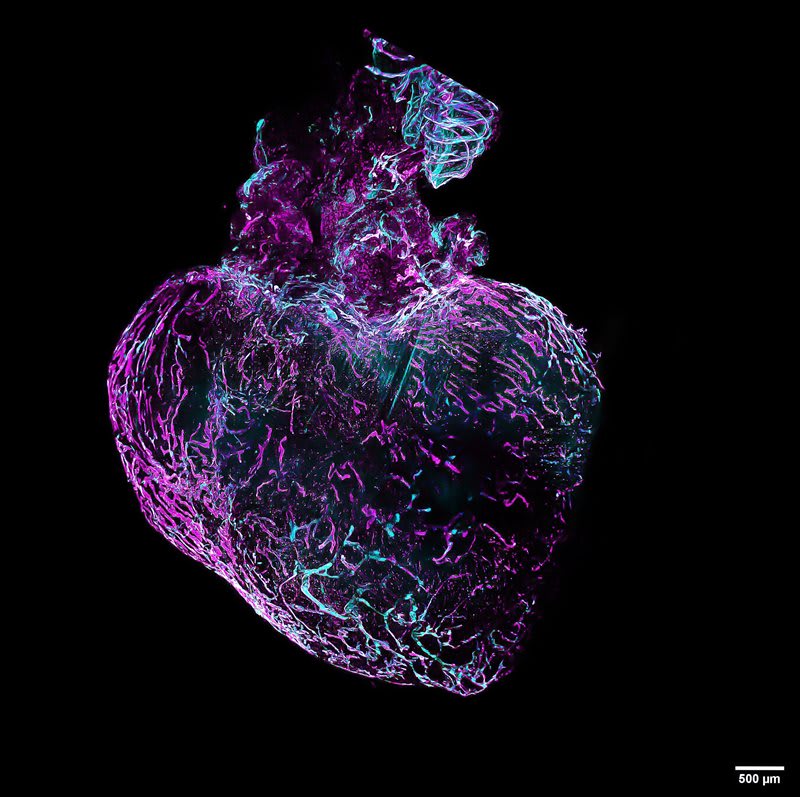Week 4: Medicine & Art
The concept of medicine as an art form and doctors and surgeons as artists is a fascinating topic for this week. The idea of the human body as a canvas for art is not new, but what interested me was the use of medical technology in artistry, specifically using magnetic resonance imaging (MRI) as a portrait. It allowed the artists to take a closer look at the intricacies of the body, especially the brain, and create unique works of art, highlighting the complexity and beauty of people. To me, it was interesting to see how artists explore the intricacies of the human form, examining the extraordinary complexity of biological systems.
Olynyk's article on the complexity of art demonstrates the need for interdisciplinary partnerships in the arts and sciences, particularly in medical art. The use of biological materials to create art demands an in-depth understanding of art and biology; medical art requires practitioners who can synthesize the two interdisciplinary to create uniquely remarkable works.
When considering the intersection of medicine and art, it's crucial to understand the Hippocratic Oath and its current implications. The oath — taken by medical professionals — includes a commitment to upholding ethical principles and a responsibility to care for patients. Medical technology incorporated into artistry should be done with regard to the body and the patients whose bodies are being used for art, ensuring that ethical principles are upheld.
The readings from this week have opened my eyes to the incredible ways medicine and art intersect. Medicine and art are intrinsically connected, seeking to understand and appreciate the beauty of the natural world. From the use of MRI technology in creating stunning portraits of the brain to the synthesis of art and biology in creating unique medical art, there is more to explore in the intersection of these two fields. Ultimately, we must approach the artistry of medicine with a deep respect for the human body and a commitment to upholding ethical principles.
Sources
Casini, Silvia. "Magnetic resonance imaging (MRI) as mirror and portrait: MRI configurations between science and the arts." Configurations 19.1 (2011): 73-99.
Ingber, Donald E. "The architecture of life." Scientific American 278.1 (1998): 48-57.
Jeffries, Stuart, et al. “Orlan's art of sex and surgery | Art.” The Guardian, 1 July 2009, https://www.theguardian.com/artanddesign/2009/jul/01/orlan-performance-artist-carnal-art. Accessed 25 April 2023.
Olynyk, Patricia. "Synthesizing fields: Art, complexism and the space beyond now." Technoetic Arts: A Journal of Speculative Research 14.1-2 (2016): 83-93.
Tyson, Peter. “The Hippocratic Oath Today | NOVA.” PBS, 26 March 2001, https://www.pbs.org/wgbh/nova/article/hippocratic-oath-today/. Accessed 25 April 2023.
Images
Curran, Chris. “BioArt Combining Art and Science Could Help Encourage STEM Education.” The Daily Beast, 1 January 2022, https://www.thedailybeast.com/bioart-combining-art-and-science-could-help-encourage-stem-education. Accessed 25 April 2023.
Esty, Amos, and Nicola Quatrano. “Dartmouth Medicine Magazine :: Art of Medicine : Twenty-Twenty Surgery.” Dartmouth Medicine, https://dartmed.dartmouth.edu/fall12/html/art_of_medicine/. Accessed 25 April 2023.
Miller, Hawken, and Ed Tobias. “Artist With MS Finds Beauty, Individuality in MRI Brain Scans.” Multiple Sclerosis News Today, 29 March 2022, https://multiplesclerosisnewstoday.com/news-posts/2022/03/29/artist-multiple-sclerosis-finds-beauty-individuality-mri-brain-scans/. Accessed 25 April 2023.




Hi Kristie,
ReplyDeleteI loved your inclusion of the Hippocratic Oath in your discussion. It's so important to critically examine how our society has separated art and medicine in order to correct this misguided practice and guarantee that doctors uphold their obligation to do the most they can to heal patients. We must ensure medical professionals provide true holistic care to patients by contextualizing medical practice as art, and therefore treating medicine with the artistic and humanistic consideration it requires.
Hello,
ReplyDeleteAdding to your topic of the Hippocratic oath, I also found it interesting how medicinal ethics developed so early in history. Nowadays, society has shifted the role of a doctor to a variety of paths- whether it be a surgeon performing life-saving surgery or gynecologist performing abortions. Watching and reading the lectures have also opened my eyes to how much synergy there is between art and medicine. In order to spread medicine concepts to the public, art is probably the best way to depict it because many people are visual learners.
Hi Kristie,
ReplyDeleteI really love the artwork you included in this week's blog post. I find it so interesting how artists can find beauty in the human biological form through MRI. I agree with your opinion regarding the Hippocratic oath and upholding ethical principles when art and the medical sciences intersect. Hippocratic Oath and its current implications. In order to ensure that ethicality of this field is preserved, I think it's important to question what type of regulation we would like to see. For instance, obtaining consent from all individuals who's actual body is used in form and conception of any artwork should be a requirement.